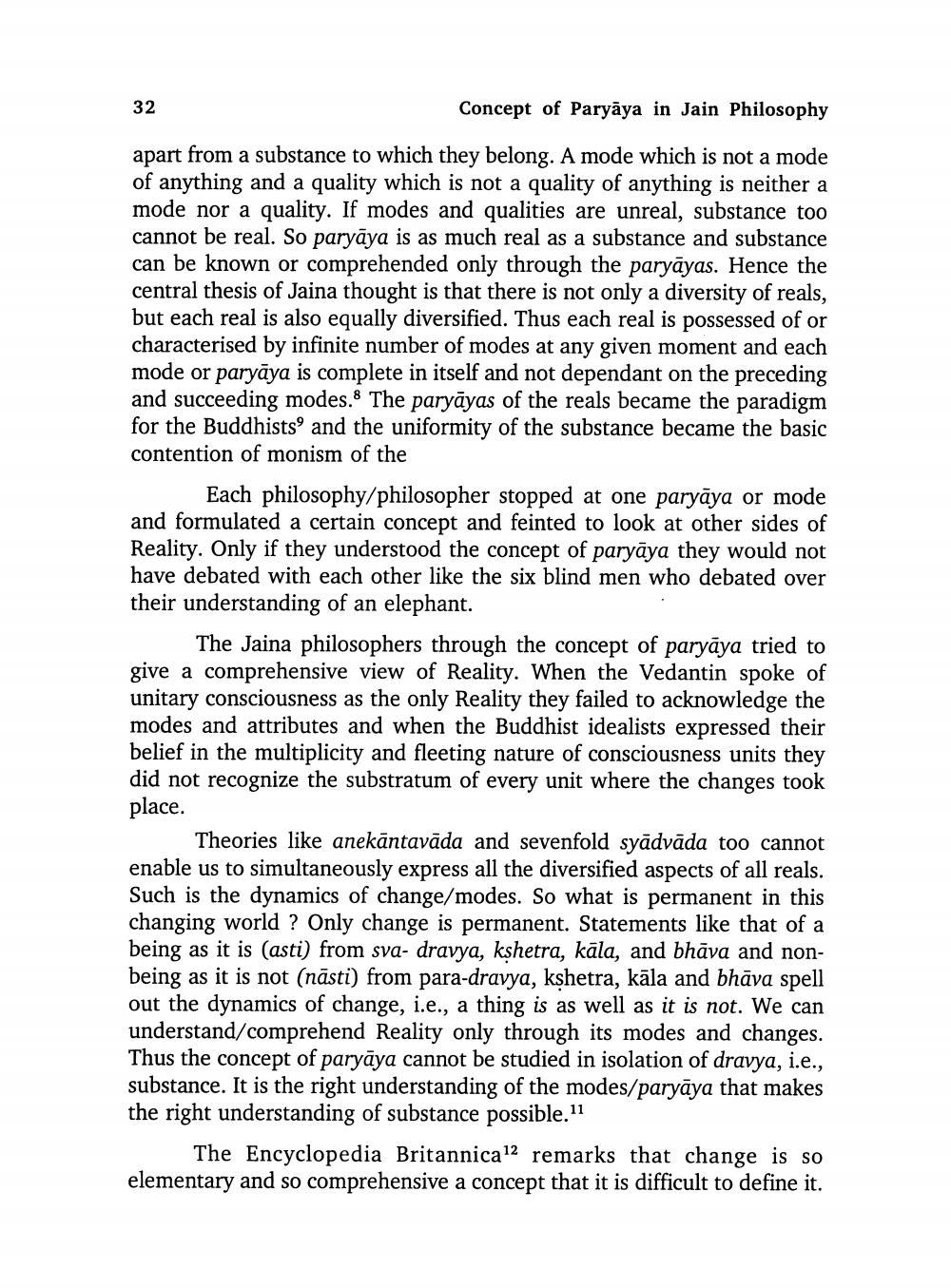________________ 32 Concept of Paryaya in Jain Philosophy apart from a substance to which they belong. A mode which is not a mode of anything and a quality which is not a quality of anything is neither a mode nor a quality. If modes and qualities are unreal, substance too cannot be real. So paryaya is as much real as a substance and substance can be known or comprehended only through the paryayas. Hence the central thesis of Jaina thought is that there is not only a diversity of reals, but each real is also equally diversified. Thus each real is possessed of or characterised by infinite number of modes at any given moment and each mode or paryaya is complete in itself and not dependant on the preceding and succeeding modes. The paryayas of the reals became the paradigm for the Buddhists and the uniformity of the substance became the basic contention of monism of the Each philosophy/philosopher stopped at one paryaya or mode and formulated a certain concept and feinted to look at other sides of Reality. Only if they understood the concept of paryaya they would not have debated with each other like the six blind men who debated over their understanding of an elephant. The Jaina philosophers through the concept of paryaya tried to give a comprehensive view of Reality. When the Vedantin spoke of unitary consciousness as the only Reality they failed to acknowledge the modes and attributes and when the Buddhist idealists expressed their belief in the multiplicity and fleeting nature of consciousness units they did not recognize the substratum of every unit where the changes took place. Theories like anekantavada and sevenfold syadvada too cannot enable us to simultaneously express all the diversified aspects of all reals. Such is the dynamics of change/modes. So what is permanent in this changing world ? Only change is permanent. Statements like that of a being as it is (asti) from sva- dravya, kshetra, kala, and bhava and nonbeing as it is not (nasti) from para-dravya, kshetra, kala and bhava spell out the dynamics of change, i.e., a thing is as well as it is not. We can understand/comprehend Reality only through its modes and changes. Thus the concept of paryaya cannot be studied in isolation of dravya, i.e., substance. It is the right understanding of the modes/paryaya that makes the right understanding of substance possible. 11 The Encyclopedia Britannica 12 remarks that change is so elementary and so comprehensive a concept that it is difficult to define it.




